Bacopa caroliniana (large pot)
Original price was: ₹70.₹39Current price is: ₹39.
Description
In India, we can sell Bacopa caroliniana (large pot) via online delivery systems to any states including Andhra Pradesh, Arunachal Pradesh, Assam, Bihar, Chhattisgarh, Goa, Gujarat, Haryana, Himachal Pradesh, Jammu & Kashmir, Jharkhand, Karnataka, Kerala, Madhya Pradesh, Maharashtra, Manipur, Meghalaya, Mizoram, Nagaland, Odisha (Orissa), Punjab, Rajasthan, Sikkim, Tamil Nadu, Telangana, Tripura, Uttar Pradesh, Uttarakhand, and West Bengal.
Quantity: large pot
Origin: USA
Plant positioning: Midground & Background
Light requirement: Medium
CO2 requirement: Low & Medium
Plant difficulty level: Easy
Plant Propagation: Stem cuttings
Bacopa caroliniana
Bacopa caroliniana grows everywhere – from soil to sandy aquariums, and there really isn’t a condition it won’t thrive in. It may be grown with practically any substrate, sunlight, or water conditions. It can even endure conditions in brackish water if let to float.
Because it grows so quickly, it performs best in higher tanks, but you can grow it in shorter tanks as well; it just overtakes them much more quickly. Lemon bacopa is useful for concealing tools, establishing fish territories, or providing cover for fry.
Bacopa Caroliniana typically grows on land and is technically a flowering herb, like moneywort. It is also known as gigantic red bacopa, lemon bacopa, water hyssop, blue water hyssop, and huge red bacopa.
You might be surprised to learn that researchers are now working to make this plant bioluminescent. The intention is to provide environmentally friendly street lighting that will save on energy expenses, enhance air quality, and keep the streets well-lit at night using bacopa and other plants and trees.
Back to your aquarium, though. If you’re considering getting some for your tank, here’s how to take care of it. It makes a great complement to practically any tank at any skill level.
Distribution & Natural Habitat
A native of multiple US states is bacopa carolinana. They live in ponds, lakes, marshes, wetlands, and other water bodies. However, it can also grow entirely out of the water near the shorelines. Typically, you’ll find them in regions where the water is 3′ deep or less.
Aquarium Care
Size: 2’+ (61 cm)
Propagation: Side shoots, clippings
Fertilizer: Liquid, but substrate helps
Speed Of Growth: Rapid
Temperature: 58 – 90 F (14 – 32C)
pH: 5.0 -9.0
Hardness: 5 – 20 dKH
Placement: Background, floating
Origin: US
Aquascaping: Not usually used
Availability: Very common
A native of multiple US states is bacopa carolinana. They live in ponds, lakes, marshes, wetlands, and other water bodies. However, it can also grow entirely out of the water near the shorelines. Typically, you’ll find them in regions where the water is 3′ deep or less.
Lighting
Although Bacopa caroliniana doesn’t require specialised or powerful lighting, it thrives when other plants aren’t in the way of its light. It’s what I’d describe as a moderate light plant. It does alter its hues and stem structure in accordance with the amount of light it receives.
It changes from pink to red or brown in bright light, so the name “big red bacopa.” It also has bushy leaves that assemble into tighter clusters. Its leaves spread apart and turn bright green under low light circumstances.
I advise over-lighting rather than under-lighting because it may undoubtedly get lanky in extremely low-light situations and will require careful trimming and several months to get it back to its bushy self.
Fertilizers & Substrates
No extra substrates, fertilisers, or CO2 are required for BC. It did grow and live no matter what I placed it in, though I did have greater success with planting it in a plant substrate than I did in sand, gravel, or pebbles. Therefore, I’d suggest a planted substrate and some liquid fertilisers over sand if you’re aiming for extremely thick growth.
Although it doesn’t look fantastic and I’m not sure whether I’d recommend it, it can also be grown floating.
If you choose sand or another substrate that doesn’t contain fertilisers, I would advise purchasing a liquid fertiliser to add once a week. Below, I’ve included your top choices for fertiliser substrate and liquid fertilisers.
Common Problems
Among the plants I can think of, Bacopa caroliniana is definitely one of the easiest to care for. The least picky plant in terms of water factors, lighting, soil, or even if it is in water at all, it also has extremely few and infrequent problems.
Since most aquatic plants are planted over water, melting is highly prevalent. If you remove the plant’s dead tissue before it begins to decompose, the new aquatic growth should emerge soon enough and flourish.
While in most circumstances quick plant growth is a good thing, it may also become an issue when it comes to routine maintenance on cutting, nutrients, and getting rid of extra plants. Fast-growing plants are often called invasive species, and effective disposal of surplus is crucial because they frequently represent a problem for nearby waterways.
Bacopa Caroliniana Maintenance
Bacopa Caroliniana requires almost no maintenance. If it floats up, you might need to replant it from time to time. You’ll also need to prune it at some point. However, except than that, you can disregard it.
Weekly fertiliser doses (or doses with every water change) and a bit more care should be taken with the level of lighting and pruning if you want to maximise growth or achieve a particular aesthetic.
Propagating Bacopa Carolinia
If you allow your lemon bacopa to grow for a sufficient amount of time, it will begin to send out pseudorunners or side shoots where new stems will emerge. You can cut it at the point where the new roots are beginning to sprout on the stem and plant those clippings if you get impatient or if it grows too big for your tank.
Don’t panic if none of the stem’s sections have roots just yet; you can still clip a piece off and let it float until roots appear. You can plant it once the roots have grown without worrying about it decaying. Your new clipping will probably decay if you try to plant it before the roots have a chance to grow.
Only logged in customers who have purchased this product may leave a review.

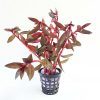
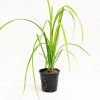




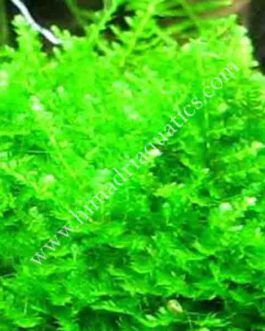
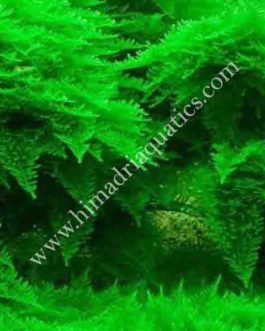
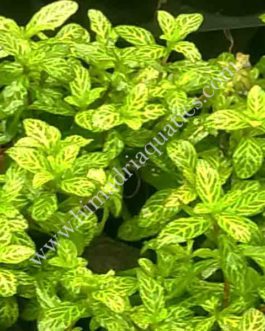

Reviews
There are no reviews yet.